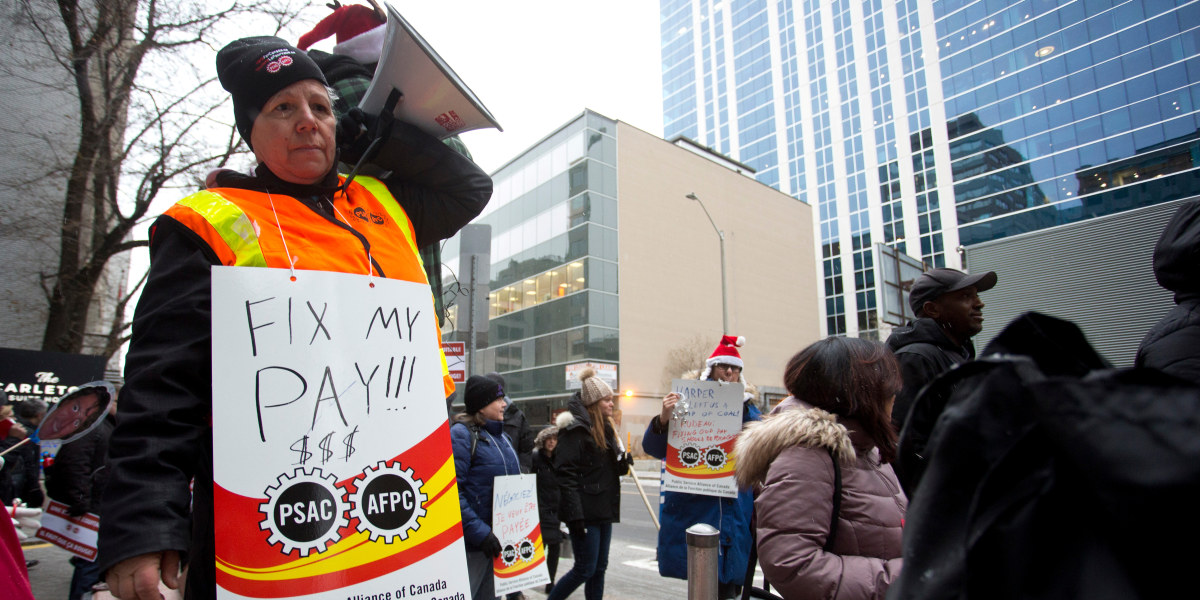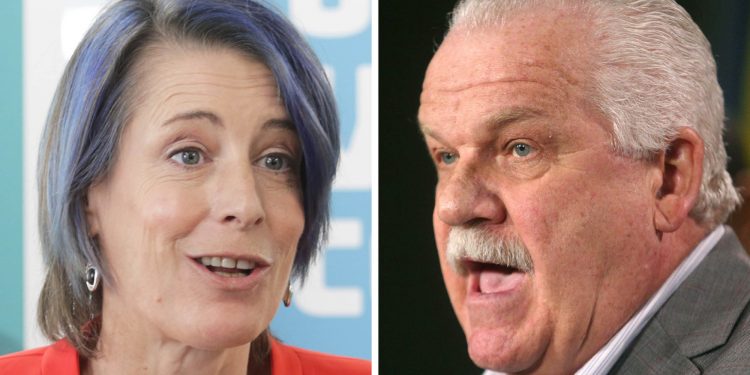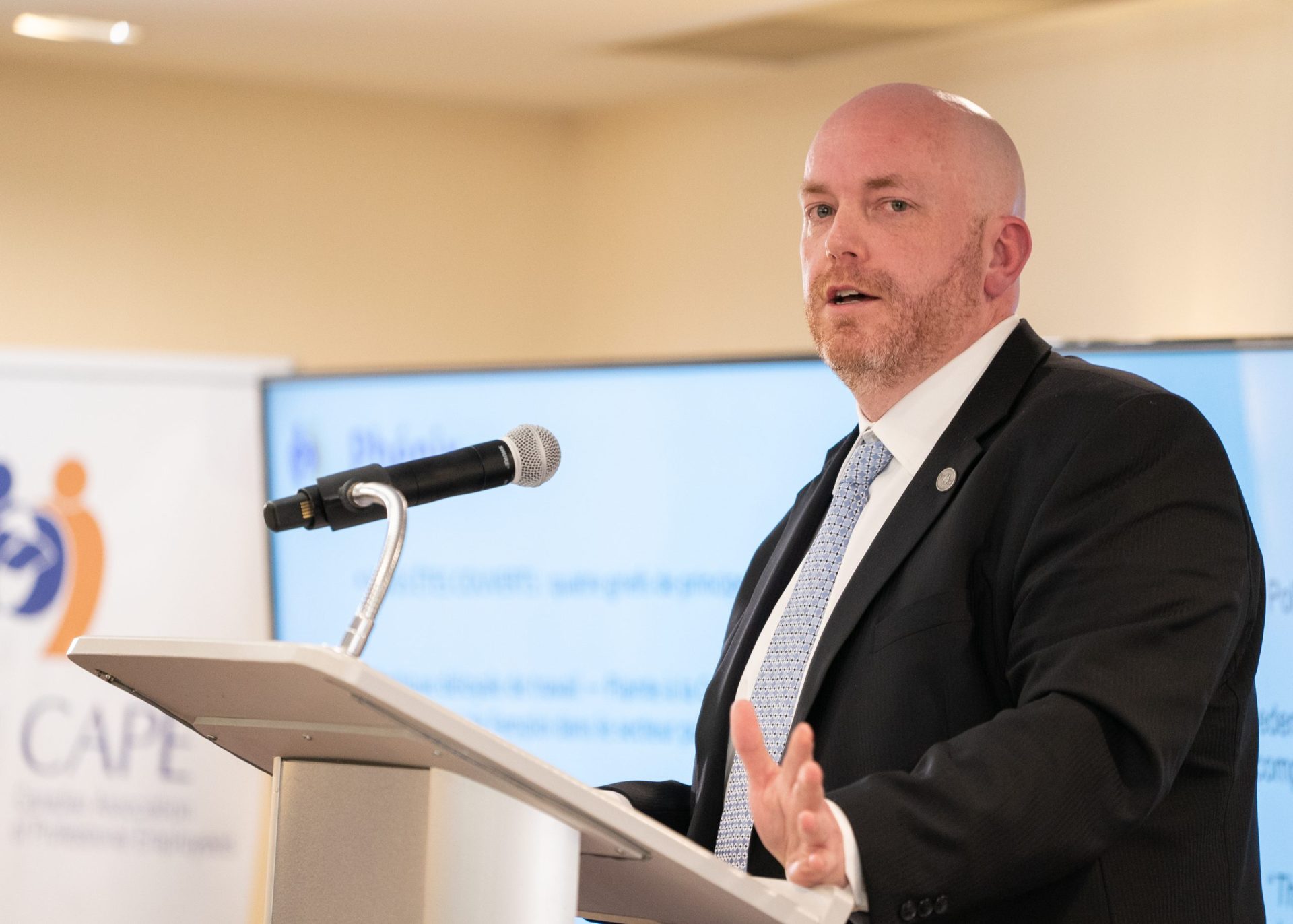Civil Circles
Lingering Phoenix issues ‘no surprise’ to union leaders, as annual survey shows increase in pay problems

With the percentage of federal bureaucrats who say they’ve had pay problems thanks to Phoenix on the rise, the leaders of the largest federal public service unions say they’re not surprised, but also “not hopeful” there’s any end in sight.
The problem-plagued Phoenix pay system continues to be an issue among respondents to the annual Public Service Employee Survey (PSES), with 72 per cent of government employees indicating that their pay or other compensation has been affected by issues with the system—a four percentage point increase from 2018.
Of that 72 per cent, 59 per cent of respondents said they had experienced new pay or other compensation issues within the previous 12 months, with 56 per cent reporting that all of their pay or other compensation issues had not been resolved. This figure was down from 65 per cent a year prior.
“Am I hopeful that there is an end in sight? Unfortunately, at this point no. Phoenix is not going away any time soon and that’s why we’re asking the government to invest in more staffing to reduce the number of Phoenix cases created every day and to eliminate over 200,000 case backlogs that still exist today,” said Public Service Alliance of Canada (PSAC) national president Chris Aylward, in an interview with The Hill Times. “The numbers, while they are terrible, they are no big surprise to us, and it just reinforces that our members be compensated properly for the stress that they’ve gone through because of this Phoenix fiasco.”
The union, which represents about 140,000 federal bureaucrats, is looking for more than the five days of leave offered to their employees by the government as compensation for Phoenix hardships, and is currently in front of the Public Interest Commission, which offers recommendations for settlement following a bargaining-table impasse between the two sides.
“It’s unacceptable that three-quarters of the workers that responded said that they suffered Phoenix pay issues, and it also demonstrated that Phoenix issues are just continuing to pile up,” said Mr. Aylward.
“The figures that have come out back up why we’re fighting for proper compensation for all of our members affected by Phoenix,” said Mr. Aylward.
PSAC is also calling for the government to hire more staffers to reduce the number of Phoenix cases created every day, and to eliminate the 202,000-case backlog, as of December 24, 2019—down from 214,000 “financial transactions beyond normal workload,” according to the Phoenix pay system dashboard.
Debi Daviau, president of the Professional Institute of the Public Service of Canada (PIPSC), Canada’s second-largest public sector union, told The Hill Times she’s been saying “for well over two years now that Phoenix simply can’t be fixed,” which is why she said they’ve pushed so hard for the Next Generation Phoenix-replacement pay system to move forward.
“It’s terribly disappointing, don’t get me wrong, that there is an increase, but it’s not all that surprising,” said Ms. Daviau. “They’re simply not going to have their issues resolved fully until people can be placed on a new functioning system.”

PIPSC president Debi Daviau, left, and PSAC national president Chris Aylward, right, say they’re ‘not surprised’ in the increase of public service workers surveyed who say they’ve been affected by issues around the problem-plagued Phoenix pay system. The Hill Times photographs by Sam Garcia and Andrew Meade
Ms. Daviau said that about half of what is needed to resolve Phoenix pay issues now has to be done through manual processes.
“There’s no automated function that deals with those things, so that means you need more manpower, and people are doing things like manual calculations and manually putting stuff into the database in order to avert the problems of Phoenix, but that takes people, and the more people they pour into it, the more chance that people will have their issues resolved,” said Ms. Daviau. “It stands to reason that the more people that are working on these manual processes, the faster it will go. But it will not ever fully resolve people’s pay issues because new stuff crops up every pay period.”
According to Public Services and Procurement Canada, the 2019 federal budget allocated $523.3-million over five years, starting in 2019–2020, to ensure that adequate resources are dedicated to addressing pay issues.
“As such, we have increased the compensation workforce to more than 2,000 employees and implemented measures to help stabilize the Phoenix pay system such as enhanced service delivery models at the Client Contact Centre and the Public Service Pay Centre,” according to an emailed statement to The Hill Times from the department. “As a result of these actions, we have been able to make steady progress towards reaching pay stabilization. Over the last two years, we have reduced the overall queue of transactions waiting to be processed at the Pay Centre by 245,000 (from 633,000 to 388,000), representing a 39 per cent decrease. Over the same period we have reduced the backlog of transactions with financial implications by 182,000 (from 384,000 to 202,000), representing a 47 per cent decrease. In addition, more than $2.2-billion in collective agreement retroactive payments have been paid to employees.”
“As we move forward, we will continue to take significant steps to reduce and resolve pay issues and work with all stakeholders, including unions and employees, to help stabilize the Phoenix Pay system,” according to PSPC.
Results from the employee survey were released on Jan. 20. Eighty-six departments and agencies participated, with 182,306 responses received from 292,750 employees surveyed, for a response rate of 62.3 per cent—up from 57.7 per cent in 2018.
According to Treasury Board Secretariat spokesperson Bianca Healy, “Results from this year’s survey are generally more positive compared to those from 2018, and indicate that the majority of public service employees like their job and are satisfied with their organization. There is still work to do on workplace well-being and compensation, and we will continue our efforts to build a healthy, respectful and supportive work environment for all public service employees.”
Ongoing fear of reprisal one of ‘biggest concerns’
Prevention and response to harassment were a major priority for public service leaders in 2018, with former Privy Council clerk Michael Wernick stating at the time that there was “a disturbing level” of bad behaviour in the public service, including bullying, intimidation, and other conduct issues.
According to the 2019 survey results, 22 per cent of respondents said they were not satisfied with how matters related to harassment are resolved in their department or agency, a number which has remained consistent throughout surveys conducted in 2018, 2017, and 2014.

CAPE president Greg Phillips questions whether the government is doing enough to address fear of reprisals for people who report harassment in the public service. Photograph courtesy of CAPE
When asked why they did not file a grievance or formal complaint about the harassment they experienced, 48 per cent—of the 15 per cent of respondents who had indicated experience with harassment—said they were “afraid of reprisal (e.g., having limited career advancement, being labelled a troublemaker),” down from 53 per cent the year prior. Forty-four per cent indicated filing a grievance or formal complaint “would not make a difference,” a figure unchanged from the year prior.
“One of my biggest concerns is the fear of reprisal in the public service,” said Greg Phillips, president of the Canadian Association of Professional Employees. “Is the government doing enough to regain the trust and confidence of employees so that victims of harassment will come forward? Absolutely not. The culture needs to change, I believe,” said Mr. Phillips, who also said that, “almost across the board,” all departments can do a better job by involving the union in trying to identify solutions.
“The results [of the survey] show that people have a lack of confidence in the culture of the public service, which is one where if you speak out, you’re risking your career, and it’s very evident in the Phoenix situation. All of this comes back to a very clear and grossly mismanaged project of Phoenix where nobody was telling the minister of all these risks, nobody wanted to speak out, they never involved the unions, and they plugged forward with this huge change initiative,” said Mr. Phillips. “What employer out there could have three-quarters of their staff experiencing pay problems for five or six years and stay in business?”
Ms. Daviau also noted that for gender diverse people, the statistics around harassment are quite high—“higher for gender diverse people than others, and slightly higher for women than men, so some focus around dealing with harassment specifically in those areas would be a priority.”
Twenty-nine per cent of gender diverse respondents said they had been the victim of harassment on the job in the last 12 months—slightly down from 30 per cent in 2018, with 54 per cent indicating they did not file a grievance or a formal complaint for fear of reprisal—down from 61 per cent the year prior.
“There’s been some minor improvements around harassment and wellness in the workplace, which are not nearly enough, by the way, but could definitely be said are a step in the right direction,” said Ms. Daviau.”
The Hill Times






 LICENSING
LICENSING PODCAST
PODCAST ALERTS
ALERTS













